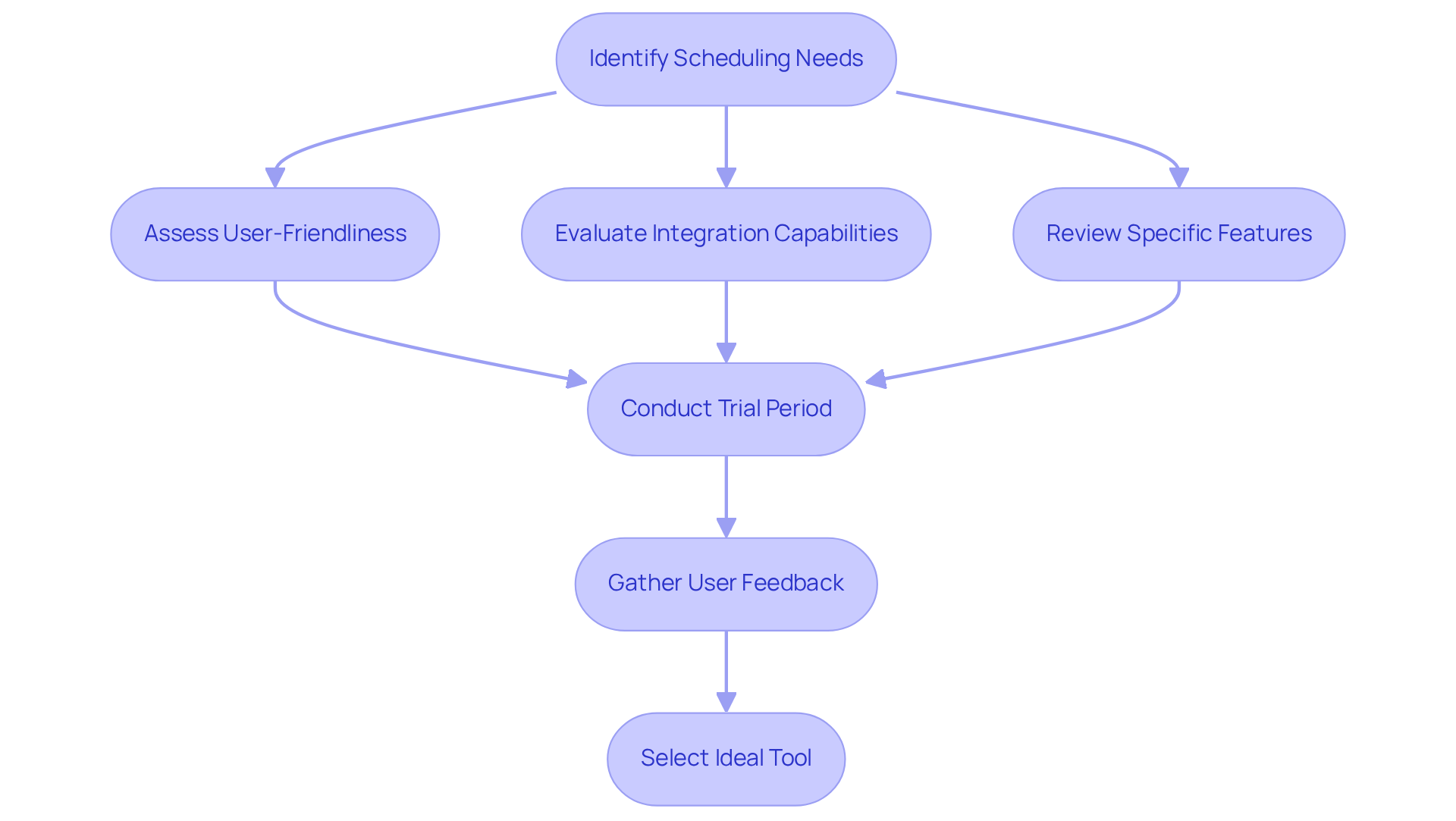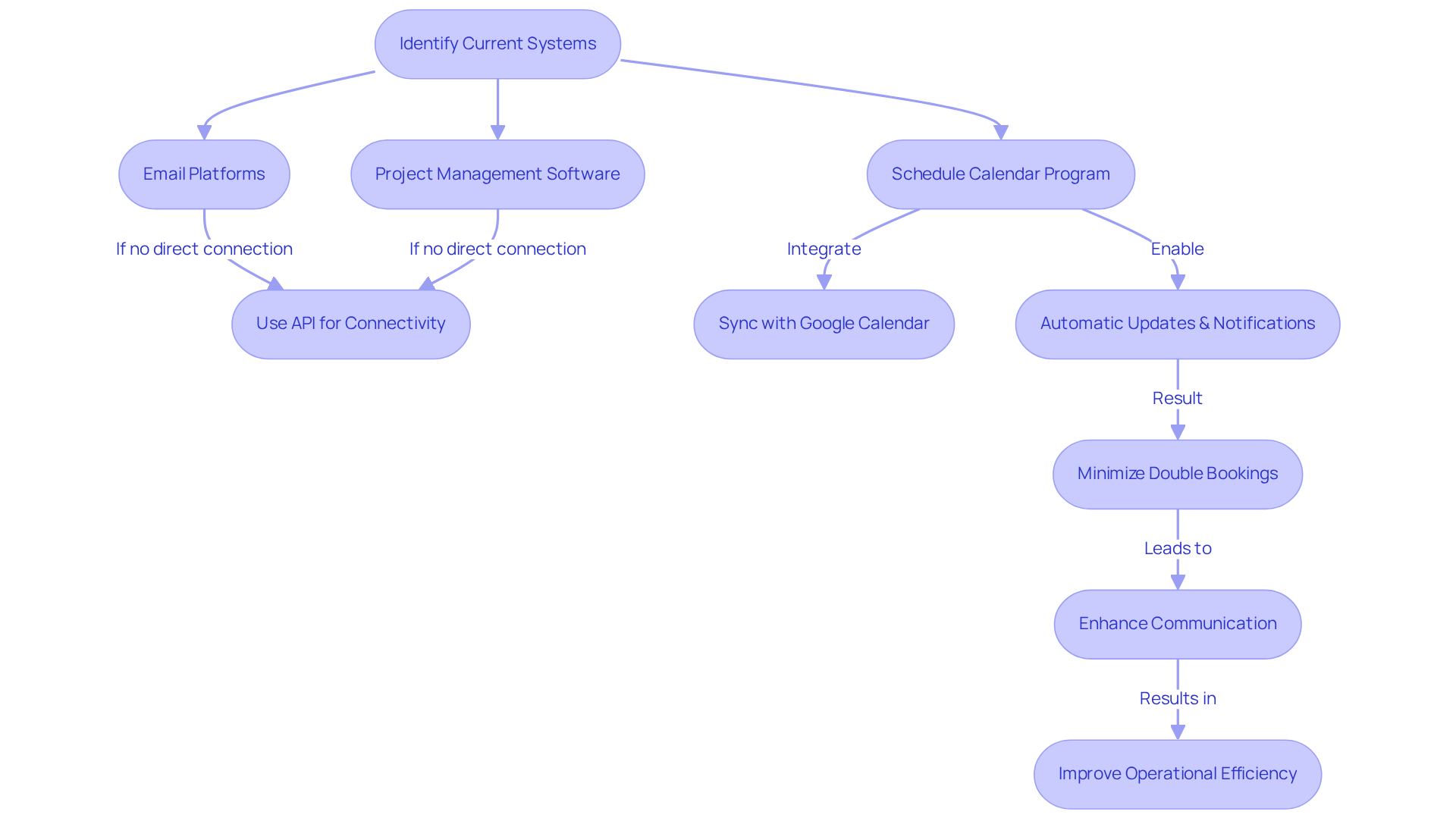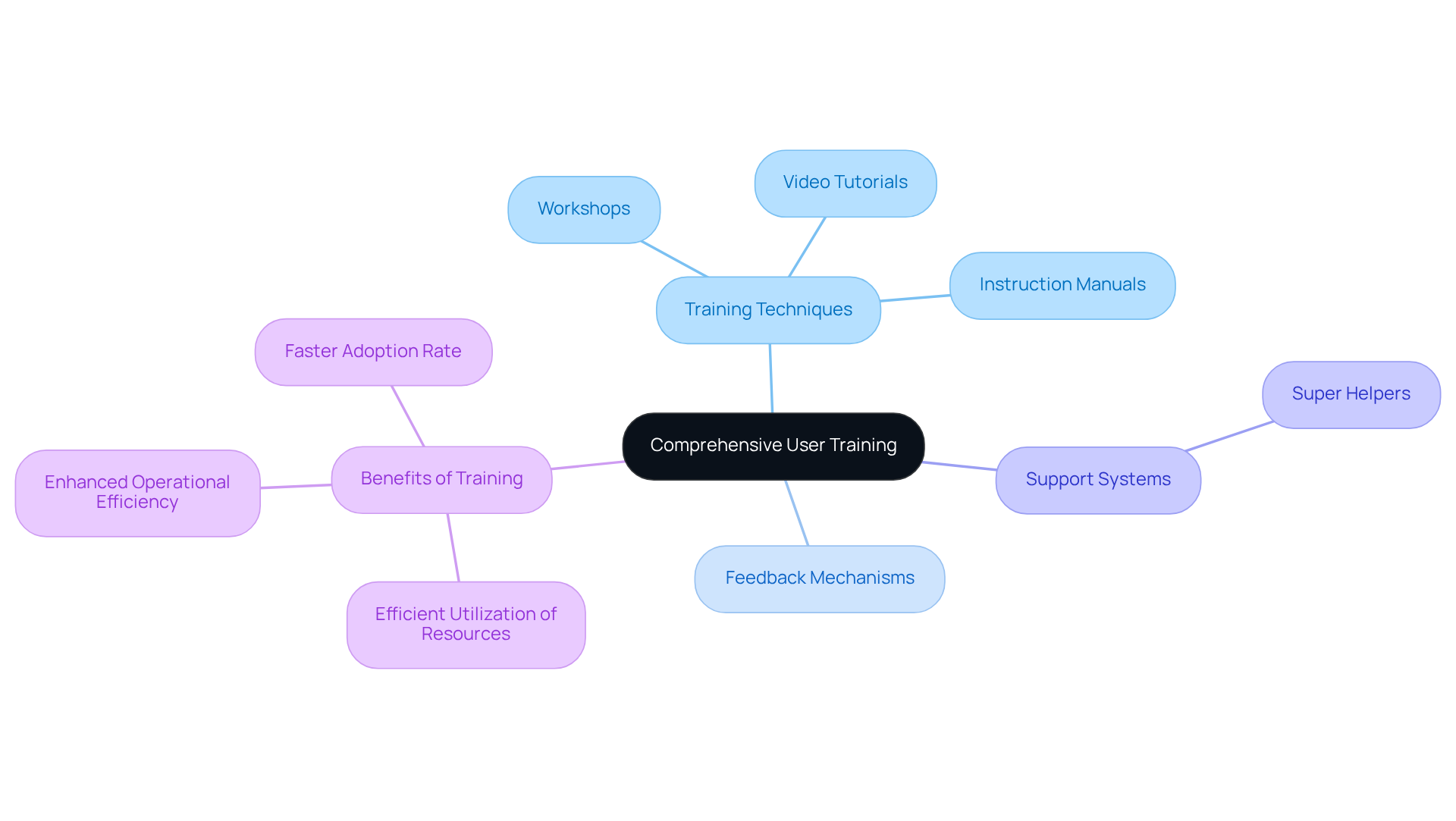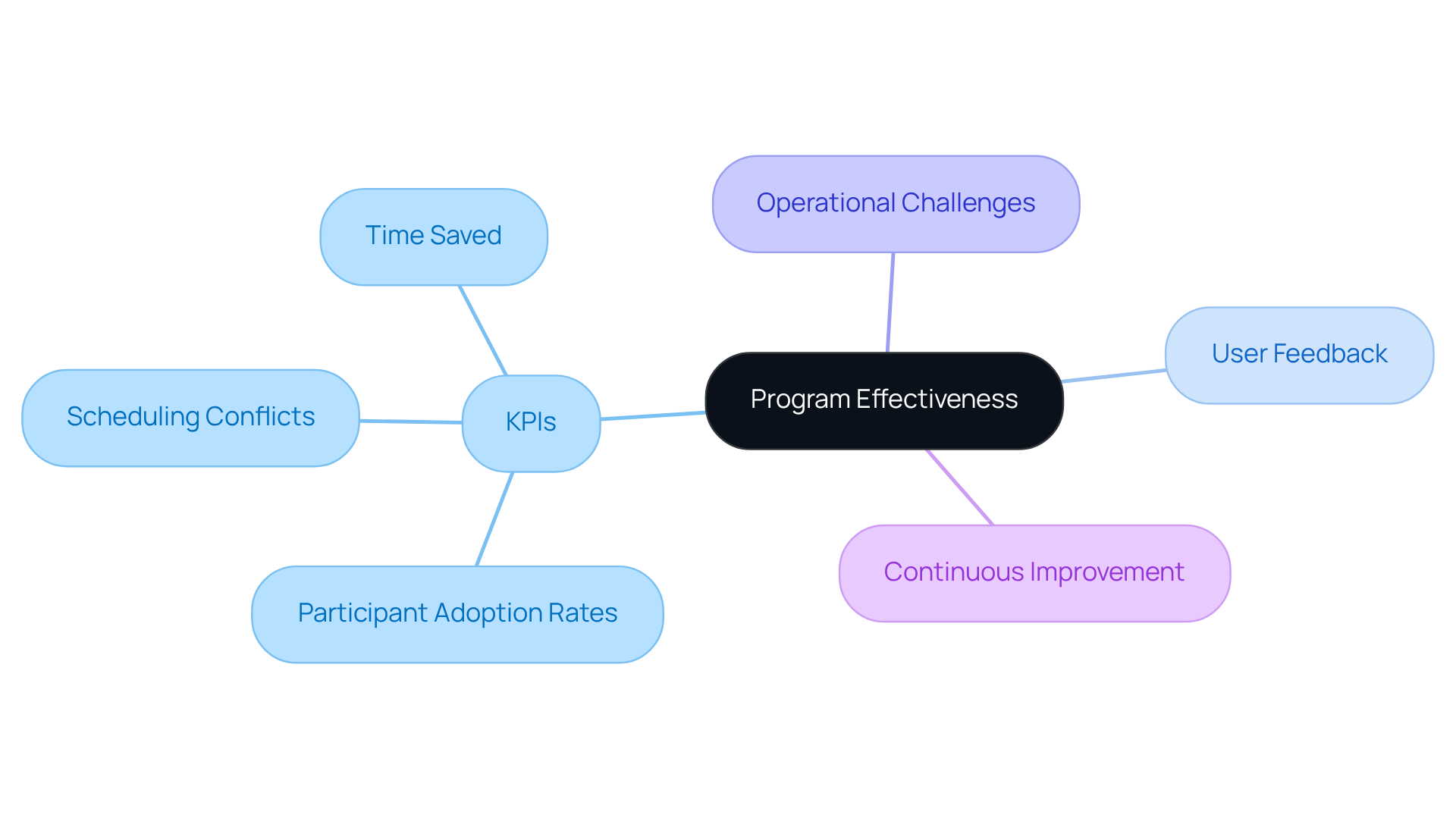4 Best Practices to Optimize Your Schedule Calendar Program

Overview
This article delineates four best practices essential for optimizing a schedule calendar program:
- Selecting the right scheduling tool
- Integrating with existing systems
- Providing comprehensive user training
- Monitoring program effectiveness
The challenges of communication inefficiencies are prevalent in many organizations, leading to operational disruptions and decreased productivity.
By carefully selecting the appropriate scheduling tool, organizations can significantly enhance communication. Integration with existing systems not only streamlines operations but also fosters a seamless workflow. Furthermore, thorough user training is critical; it improves user adoption and ensures that all team members can utilize the tools effectively. Ongoing evaluation of program effectiveness is vital for continuous improvement, reinforcing the commitment to operational efficiency.
Each of these practices is supported by compelling evidence. For instance, organizations that invest in proper tool selection report marked improvements in team collaboration. Moreover, integration efforts have shown to reduce redundancies, while comprehensive training initiatives lead to higher user satisfaction rates. Ultimately, these strategies contribute to the overall efficiency of the organization, making it imperative for leaders to adopt these best practices.
Introduction
Crafting an efficient scheduling calendar program transcends mere tool selection; it is a pivotal strategy for enhancing organizational productivity and communication. Organizations grappling with operational challenges often experience communication inefficiencies that impede progress. By implementing best practices in scheduling, businesses can unlock significant improvements in operational efficiency, streamline workflows, and foster collaboration among teams.
However, the challenge remains: how can organizations effectively choose the right tools and strategies to overcome common scheduling hurdles? Exploring these best practices will not only illuminate the path to optimization but also provide the insights needed to drive success. The right approach to scheduling can transform operational dynamics, making it essential for organizations to prioritize this critical area.
Choose the Right Scheduling Tool
When selecting a schedule calendar program, it is crucial to consider factors such as user-friendliness, integration capabilities, and specific features tailored to your organization’s needs. Communication inefficiencies can hinder productivity, making it essential to choose the right tool. For instance, applications like Schedulelink facilitate immediate meeting scheduling, significantly reducing the time spent on back-and-forth communications.
Assess resources based on their ability to manage multiple schedule calendar programs, provide notifications, and allow for personalization. Conducting a trial period with several options can yield valuable feedback from users, ensuring that the final choice enhances workflow rather than complicating it. Practical examples illustrate that organizations investing time in selecting the appropriate resource often experience marked improvements in planning efficiency and team collaboration.
By prioritizing the right application, you can empower your team to communicate effectively and streamline operations, ultimately driving success.

Integrate with Existing Systems
To enhance operational efficiency, it is crucial to address the prevalent issue of communication inefficiencies within organizations. Integrating your planner with current systems such as email platforms, project management software, and a schedule calendar program is a strategic solution. This seamless connection not only enables automatic updates and notifications through the schedule calendar program but also minimizes the risk of double bookings and missed appointments, which can significantly impact productivity.
For instance, by integrating your scheduling tool with Google Calendar, events can automatically sync, ensuring that all team members stay informed about their commitments. This feature is vital for fostering collaboration and accountability within teams. Furthermore, if direct connections are not available, consider leveraging APIs or middleware solutions to establish the necessary connectivity. Organizations that prioritize such integrations often report higher client satisfaction and experience a reduction in administrative burdens, making this approach not just beneficial, but essential.
In conclusion, taking proactive steps to integrate your schedule calendar program can transform your operational framework, resulting in improved efficiency and enhanced communication. Explore the potential of these integrations to streamline your processes and elevate your organizational effectiveness.

Provide Comprehensive User Training
To tackle the pervasive issue of communication inefficiencies within organizations, it is imperative to implement a comprehensive training program that covers all aspects of the schedule calendar program, from fundamental functionalities to advanced features. By employing a diverse array of training techniques—such as hands-on workshops, engaging video tutorials, and detailed instruction manuals—organizations can effectively cater to different learning styles, thereby enhancing participant comprehension and retention.
Encouraging feedback during training sessions is crucial; it allows for the immediate addressing of concerns or questions, fostering an environment of continuous improvement. Additionally, consider designating ‘super helpers’ within teams who can provide ongoing support and guidance. This strategy not only empowers individuals but also cultivates a culture of collaboration and resourcefulness.
Organizations that invest in a comprehensive training schedule calendar program for their participants frequently observe a faster adoption rate and a more efficient utilization of planning resources. This, in turn, leads to enhanced operational efficiency, showcasing the undeniable benefits of a well-structured training initiative. By prioritizing training, organizations position themselves to navigate operational challenges with confidence and agility.

Monitor and Evaluate Program Effectiveness
Establishing key performance indicators (KPIs) is essential for assessing the efficiency of your planning system. Metrics such as:
- Participant adoption rates
- The frequency of scheduling conflicts
- Time saved in scheduling processes
provide valuable insights into operational challenges. Organizations that actively monitor these metrics are better positioned to adapt to changing needs and continuously improve their operational efficiency. Regular surveys to gather user feedback on the system’s functionality and ease of use are crucial. By utilizing this data, informed decisions can be made regarding potential adjustments or upgrades to the tool, enhancing overall effectiveness.

Conclusion
Selecting an effective scheduling calendar program is crucial for enhancing organizational productivity and communication. By focusing on the right tools, integrating existing systems, providing thorough training, and monitoring effectiveness, organizations can significantly improve their scheduling processes. These best practices not only streamline operations but also foster a collaborative environment where teams can thrive.
The importance of choosing user-friendly scheduling tools that align with organizational needs cannot be overstated. Integration with existing systems, such as email and project management software, is essential to avoid communication breakdowns. Furthermore, comprehensive training ensures that all team members can utilize the scheduling tools effectively, leading to faster adoption and improved operational efficiency. Regular monitoring and evaluation of the scheduling program’s performance through key metrics enable organizations to adapt and refine their approach continuously.
Ultimately, investing time and resources into optimizing scheduling calendar programs yields substantial returns in the form of enhanced productivity and team collaboration. Organizations are encouraged to take proactive steps in implementing these practices, as they not only streamline workflows but also create a more engaged and efficient workforce. Embracing these strategies can lead to significant improvements in scheduling efficiency, laying the groundwork for long-term success.
Frequently Asked Questions
What factors should be considered when selecting a scheduling tool?
When selecting a scheduling tool, it is important to consider user-friendliness, integration capabilities, and specific features that meet your organization’s needs.
How can the right scheduling tool impact productivity?
The right scheduling tool can reduce communication inefficiencies, which helps improve productivity by facilitating immediate meeting scheduling and minimizing back-and-forth communications.
What features should a scheduling tool have?
A scheduling tool should be able to manage multiple calendar programs, provide notifications, and allow for personalization.
Is it beneficial to conduct a trial period with scheduling tools?
Yes, conducting a trial period with several scheduling options can provide valuable feedback from users, ensuring that the final choice enhances workflow.
What are the potential outcomes of investing time in selecting the appropriate scheduling resource?
Organizations that invest time in selecting the right scheduling resource often experience improvements in planning efficiency and team collaboration.
How does choosing the right scheduling application affect team communication?
Prioritizing the right scheduling application empowers teams to communicate effectively and streamlines operations, ultimately driving success.
